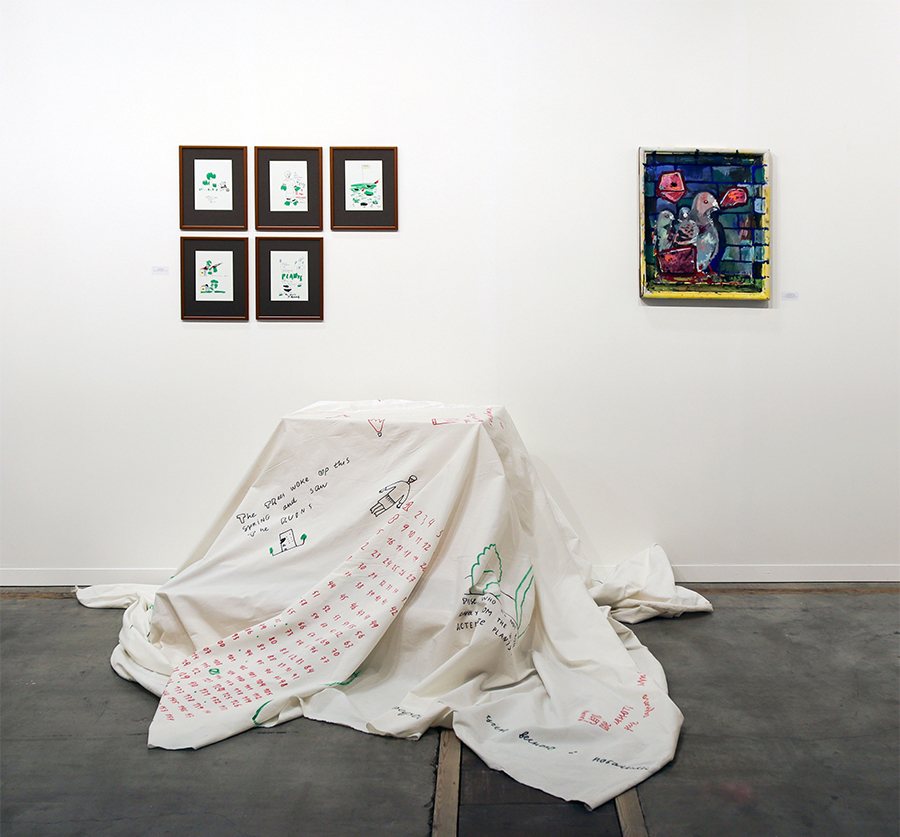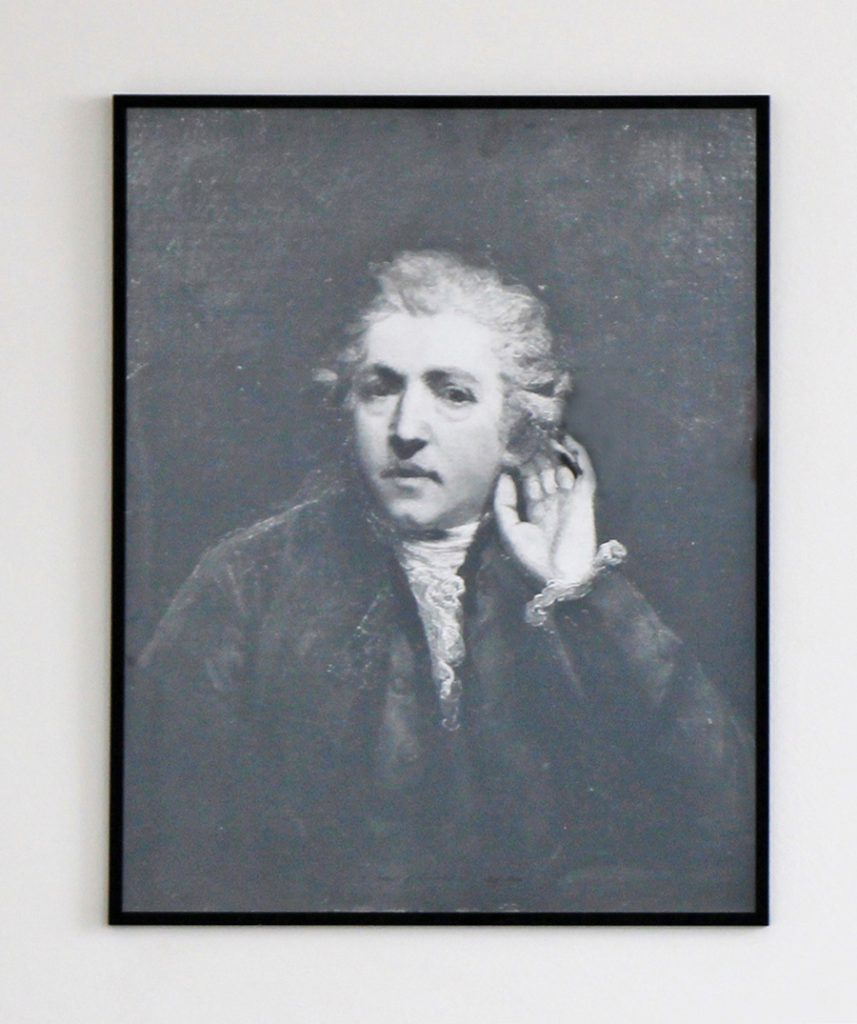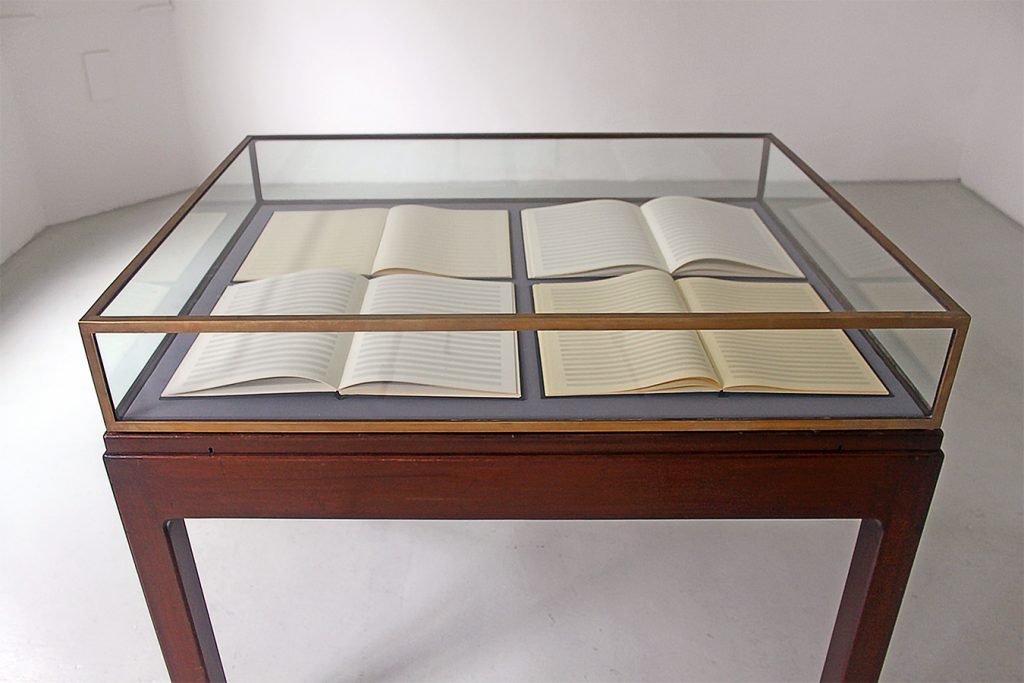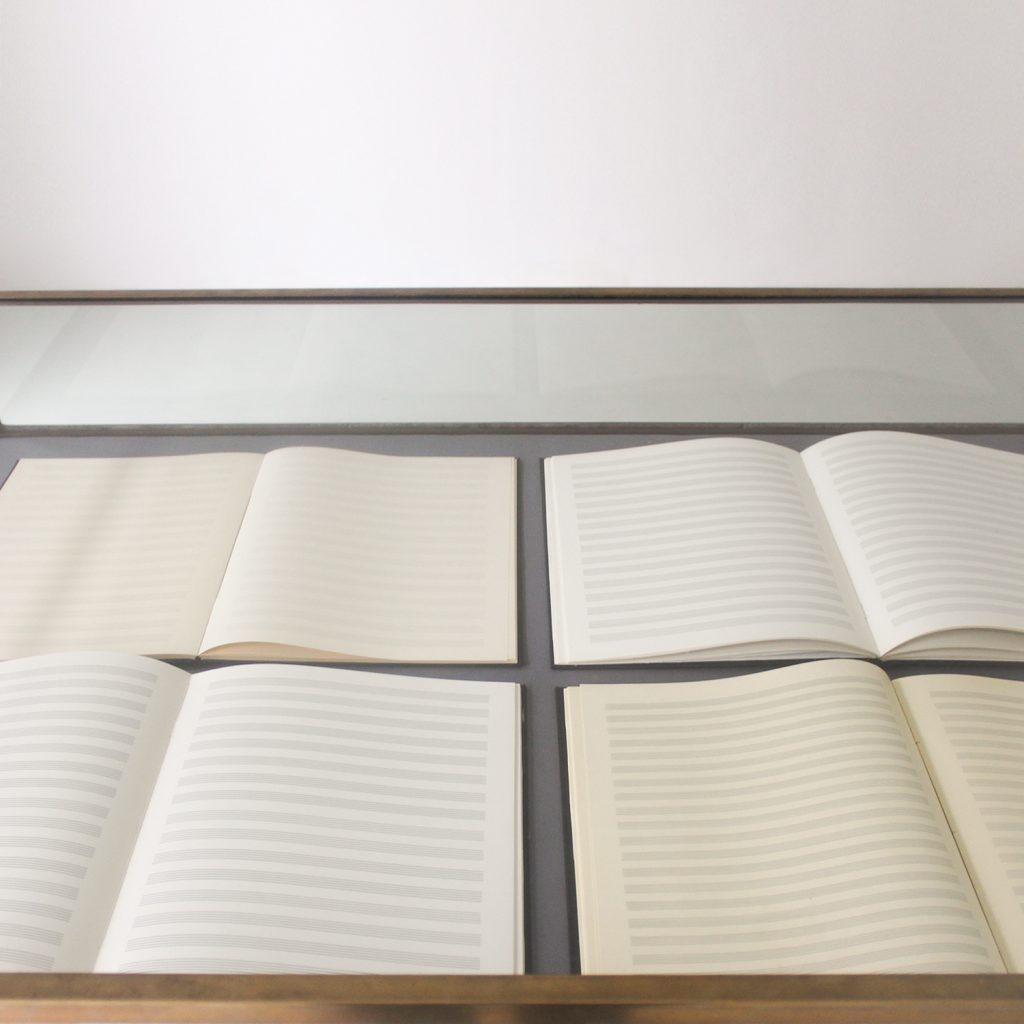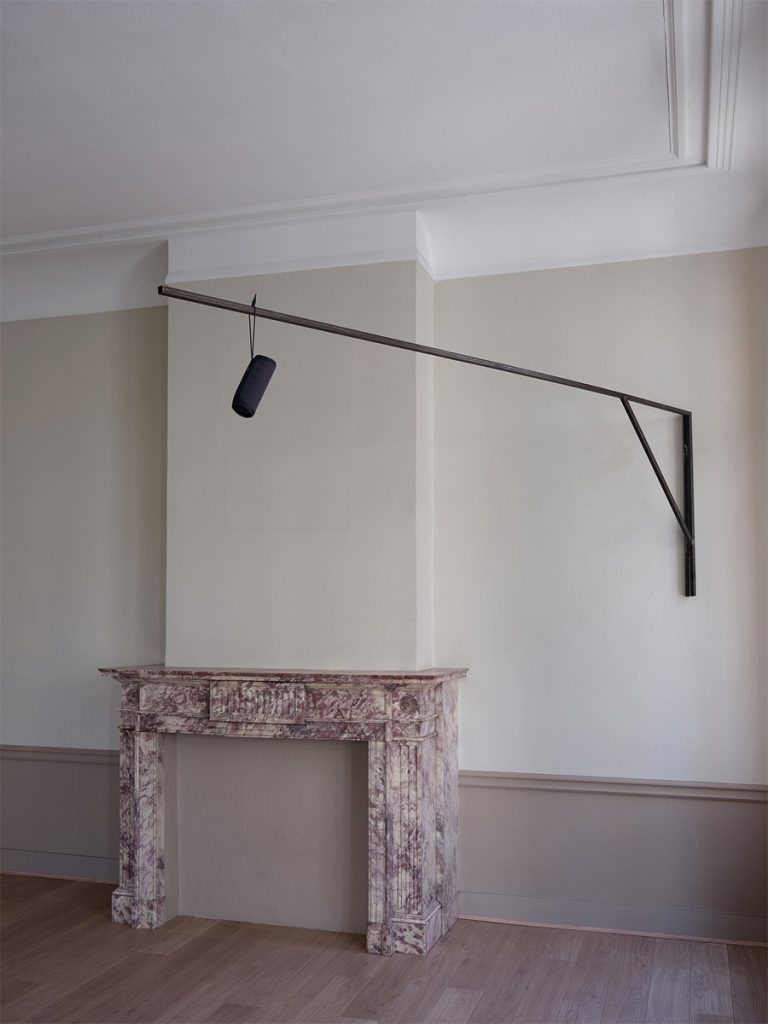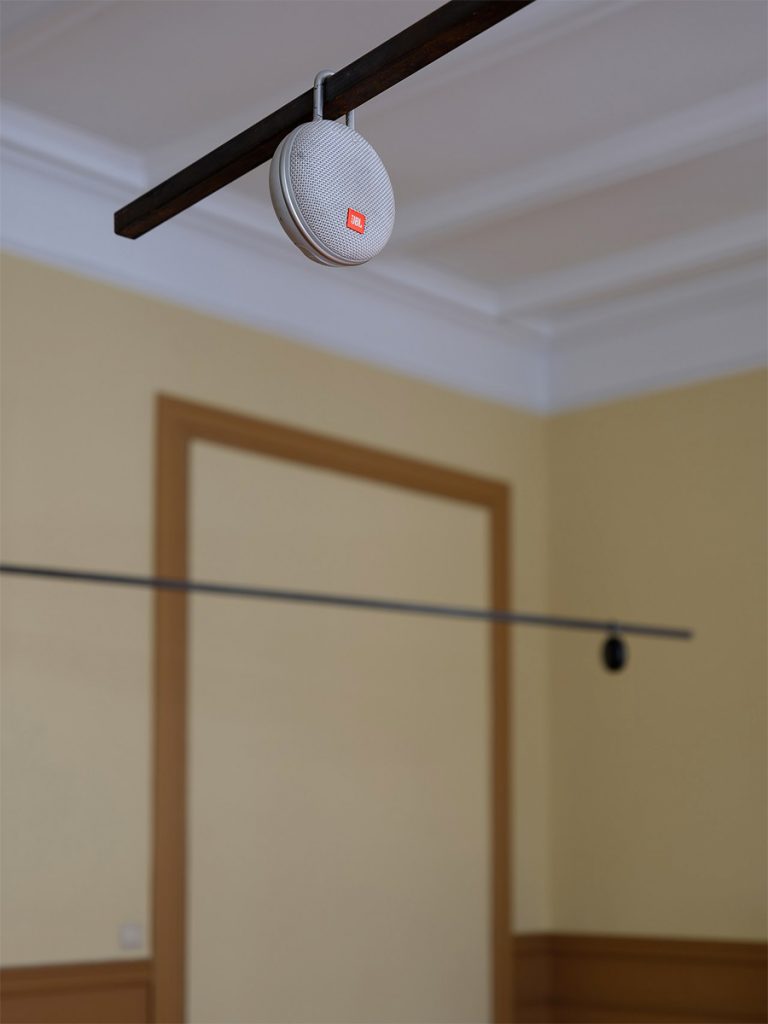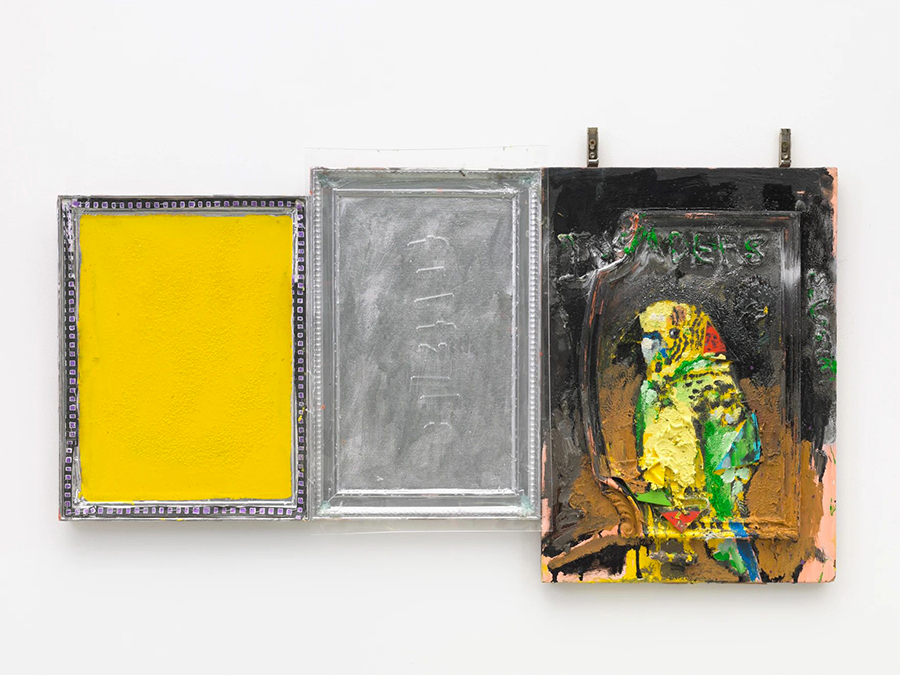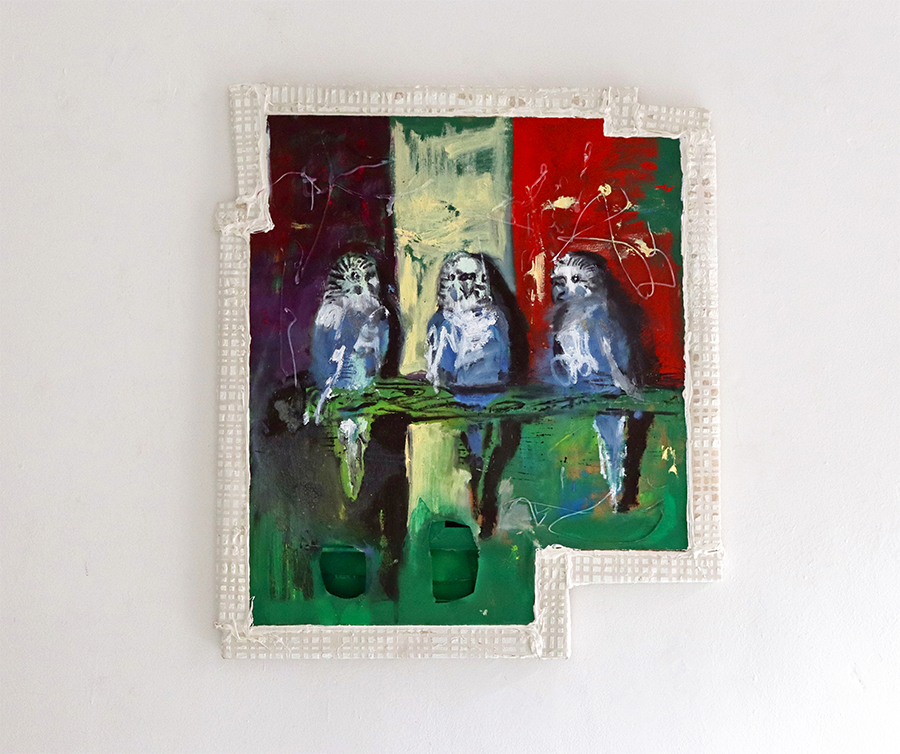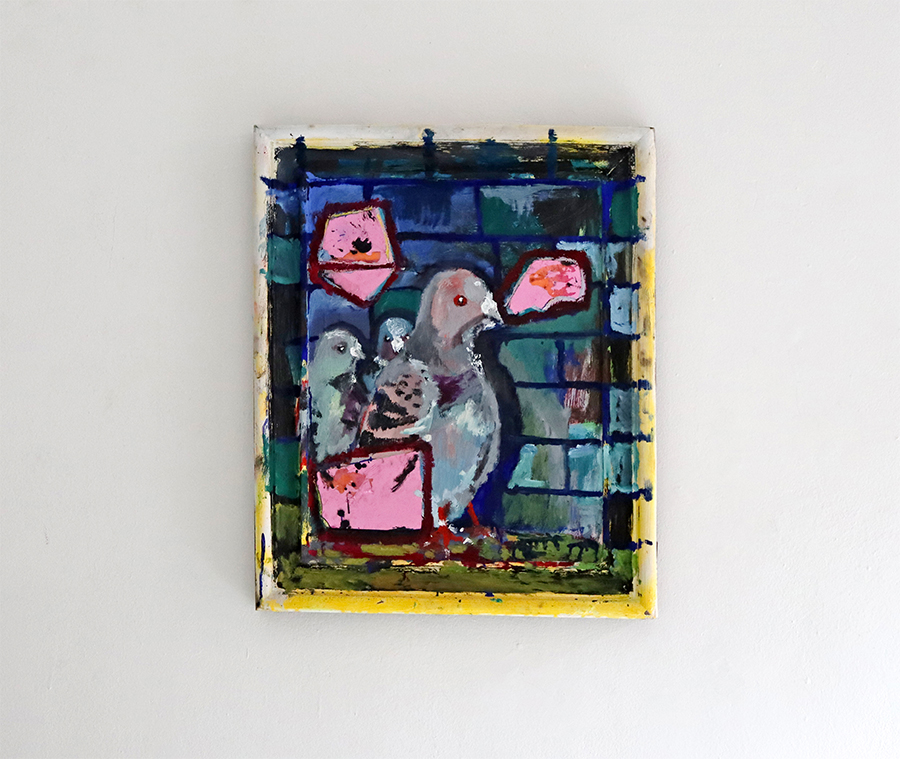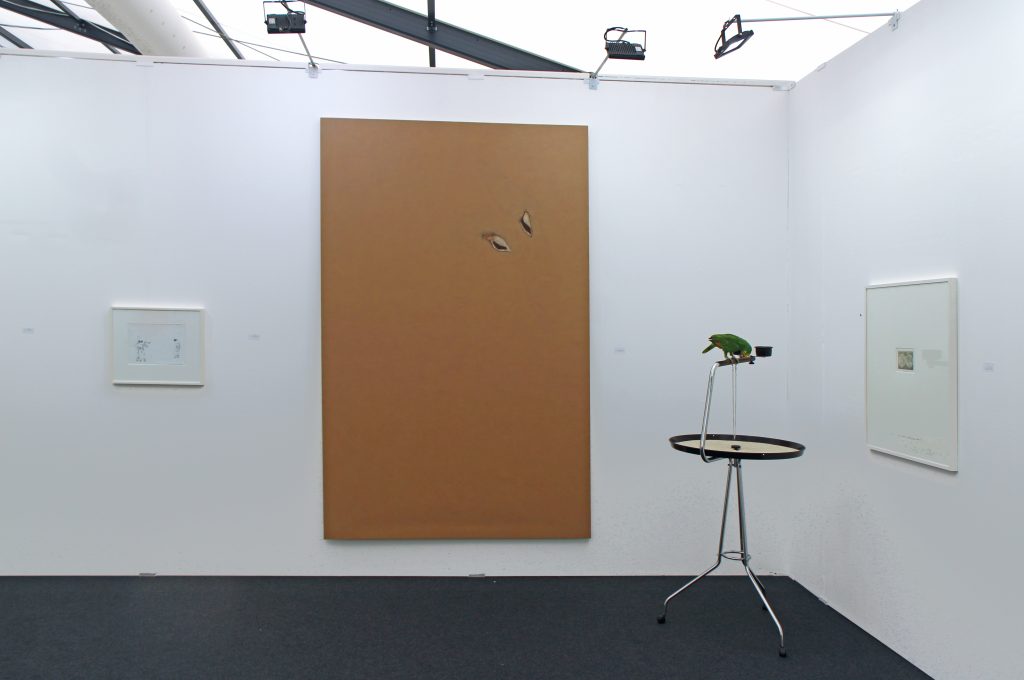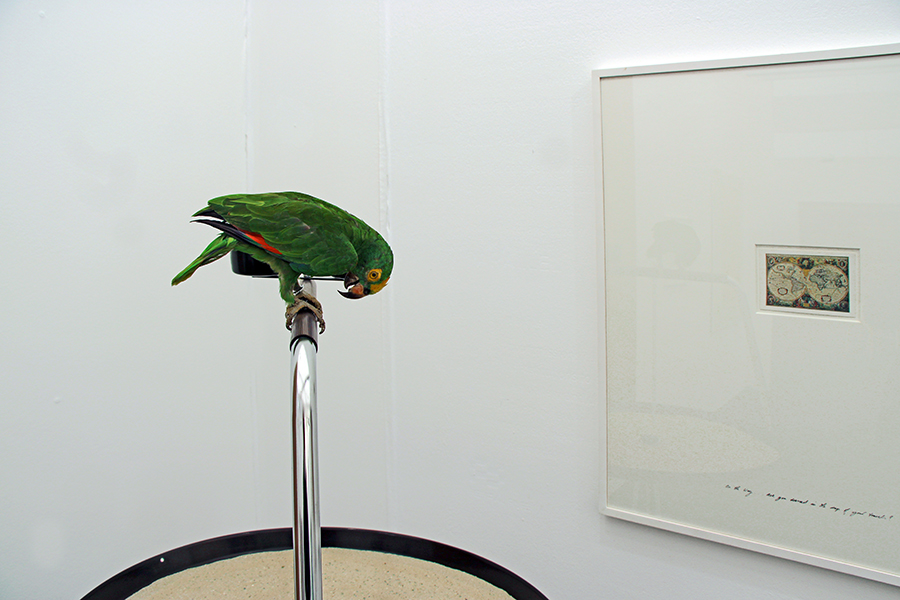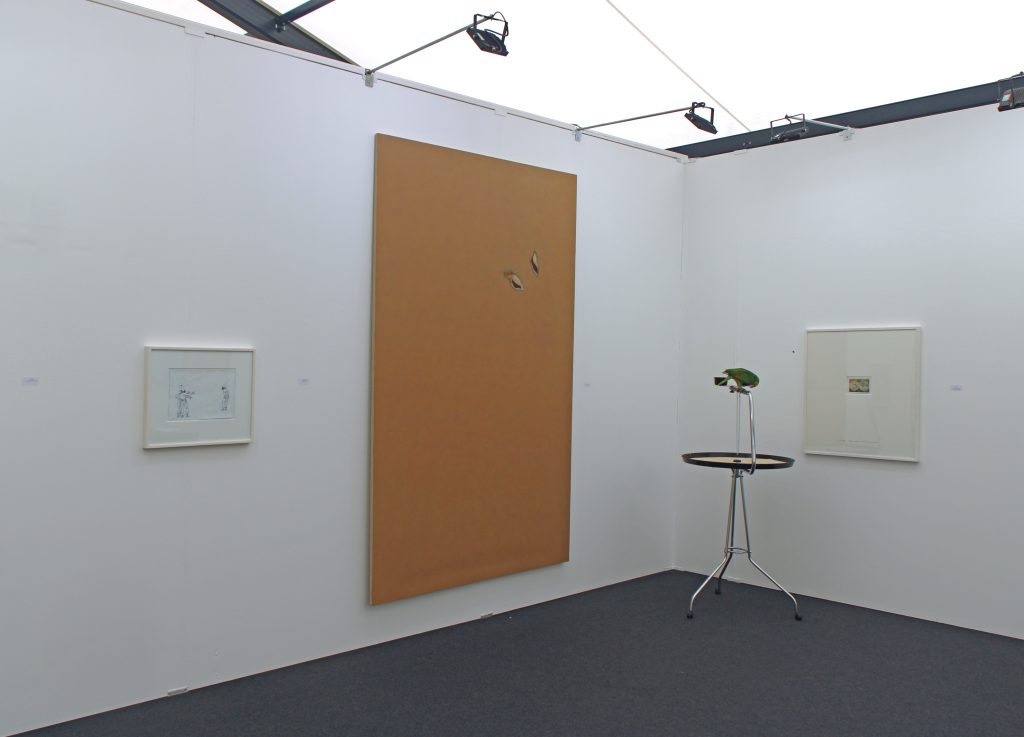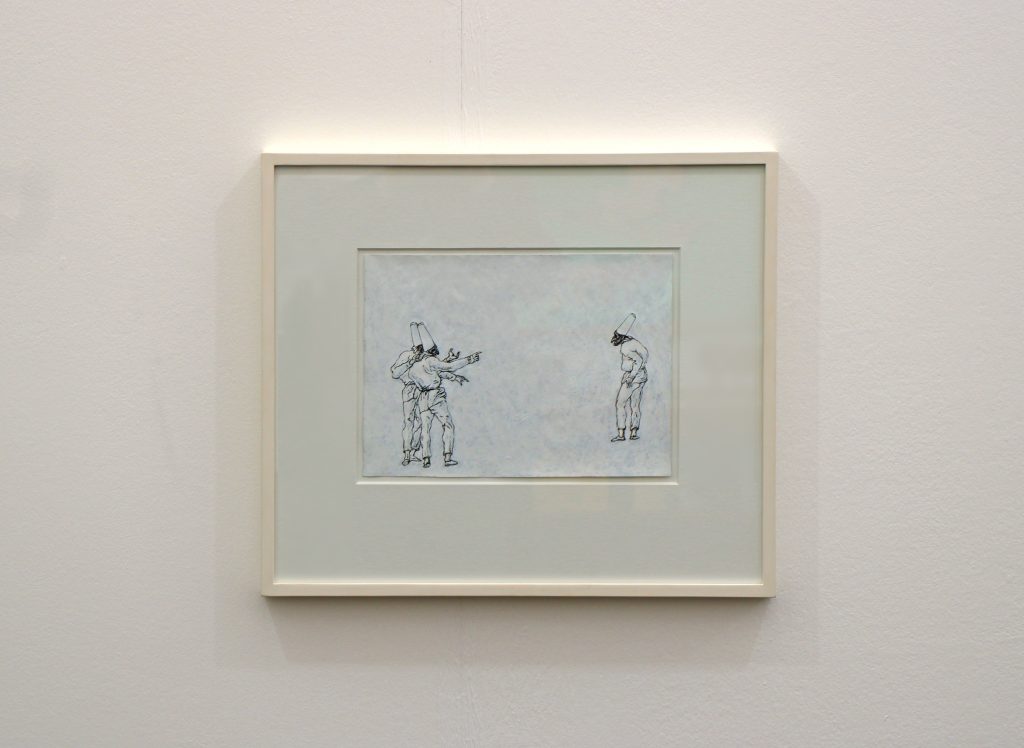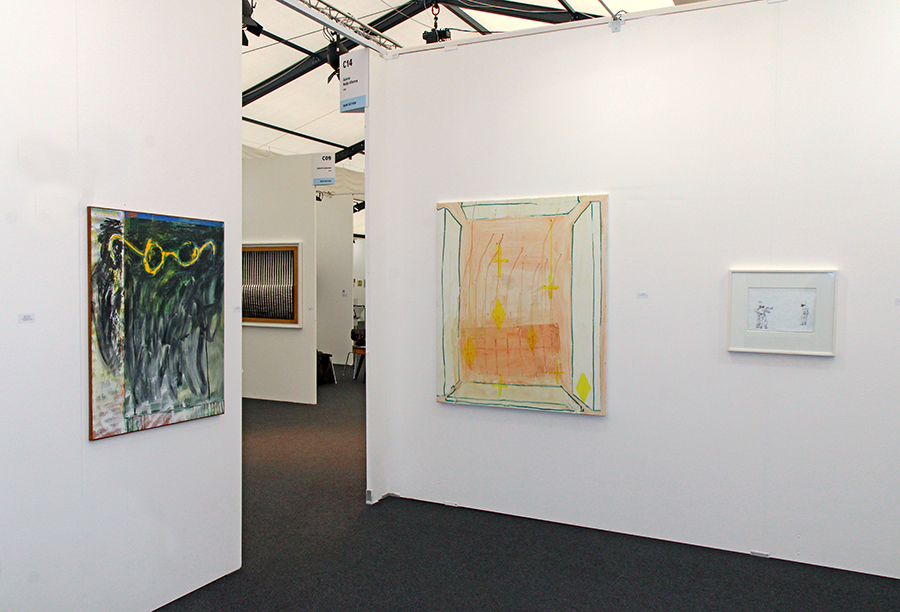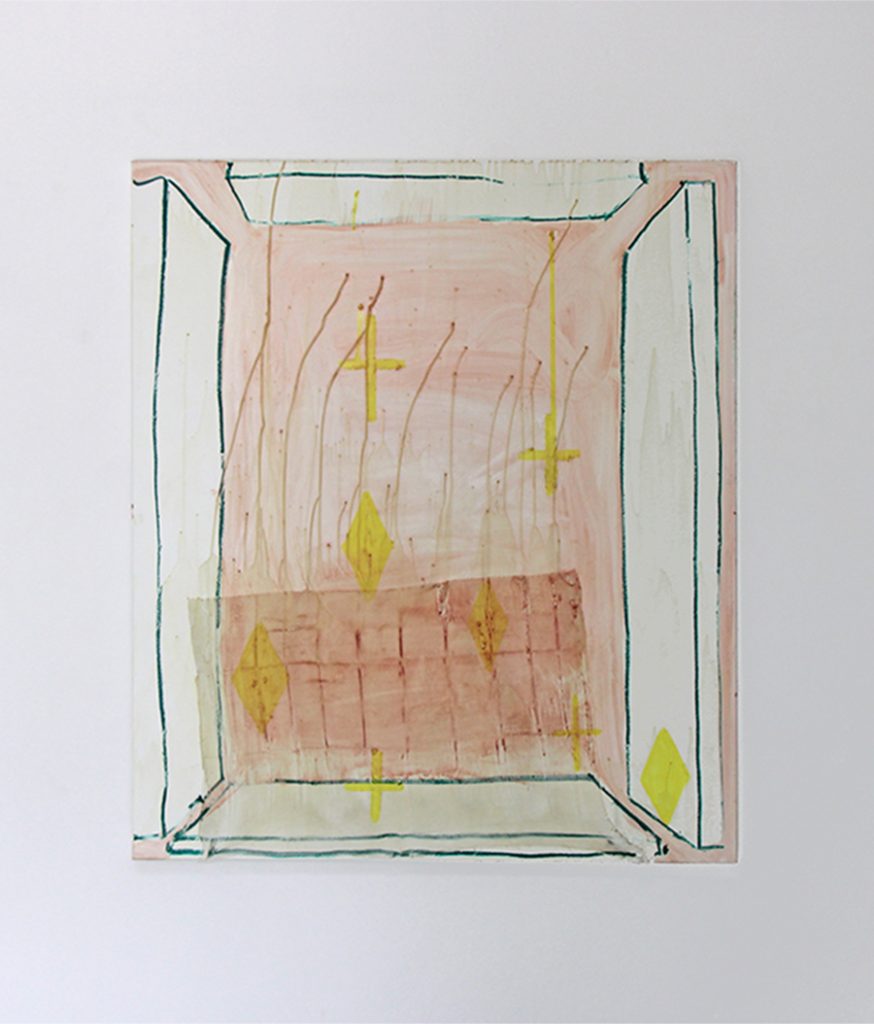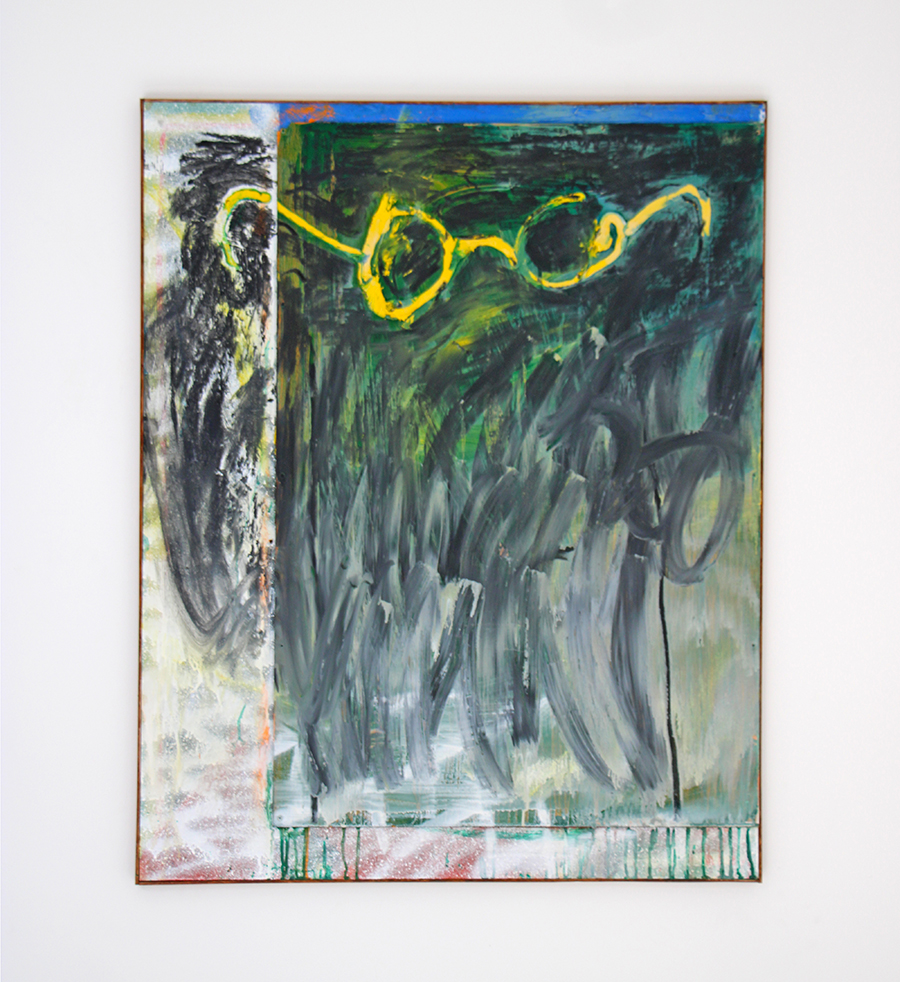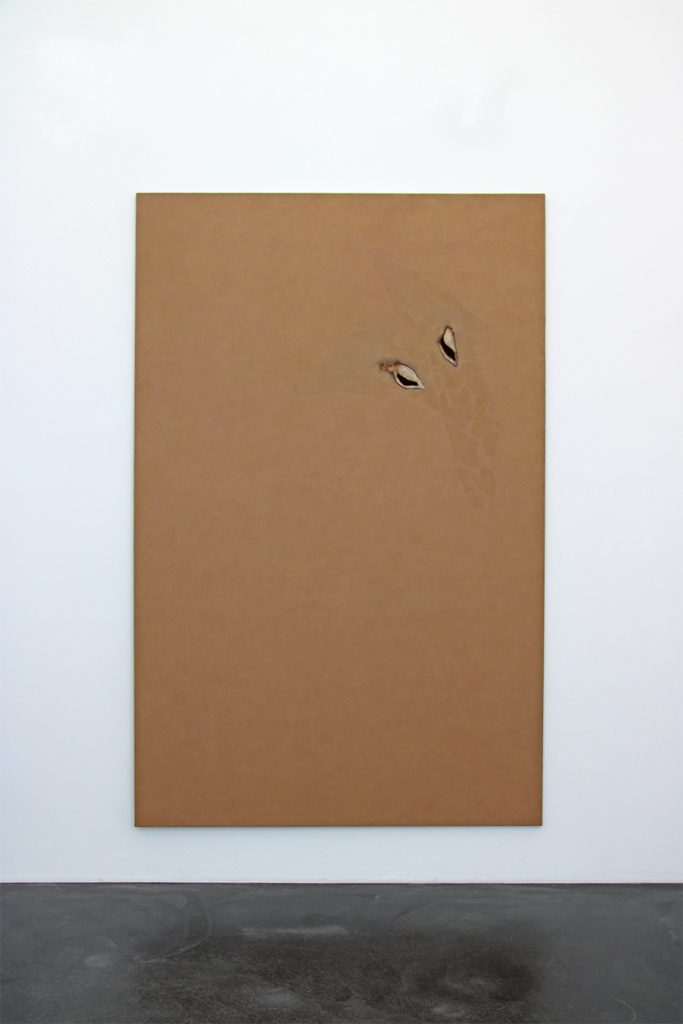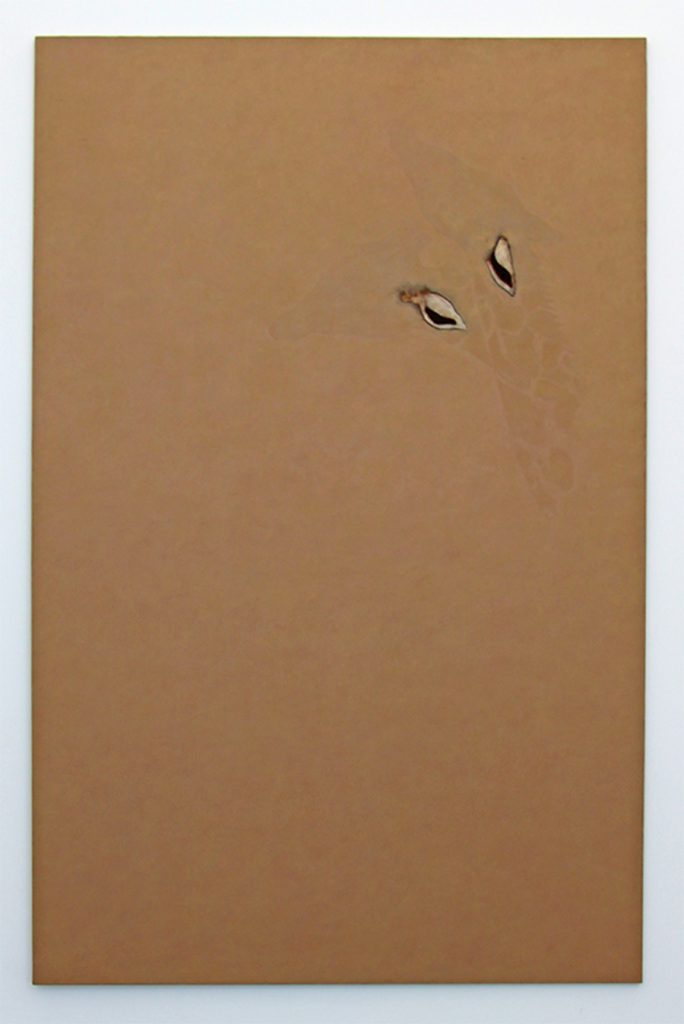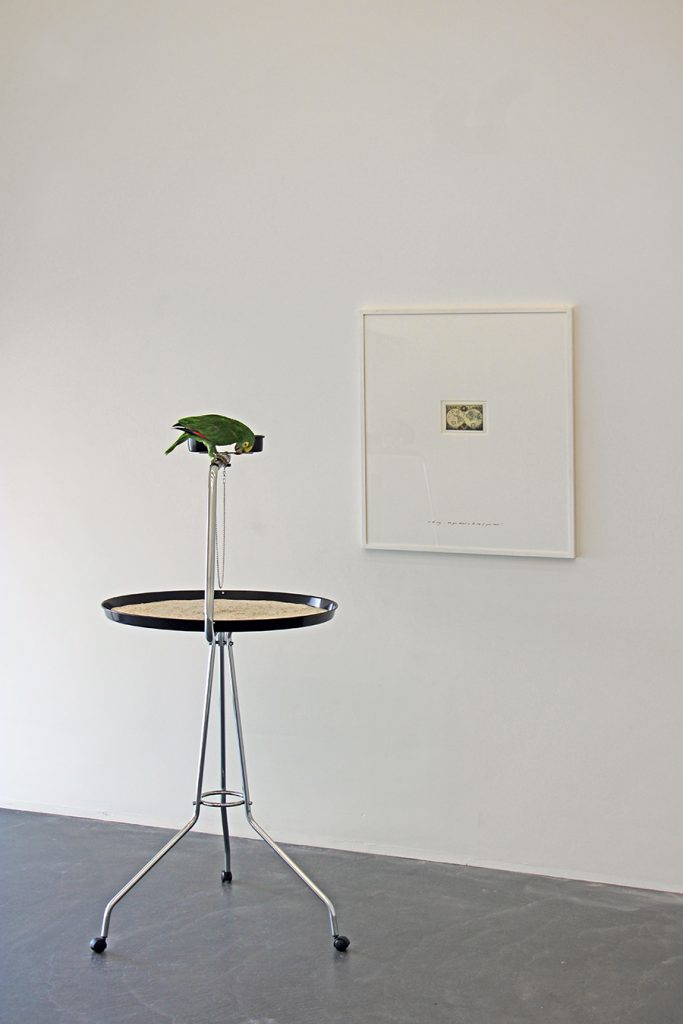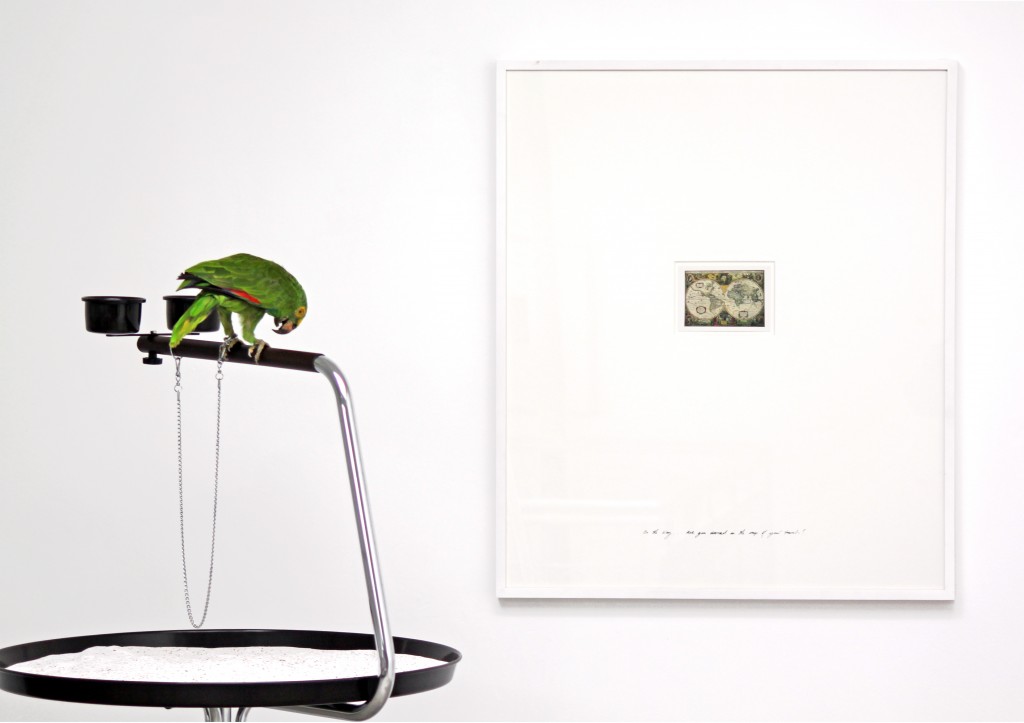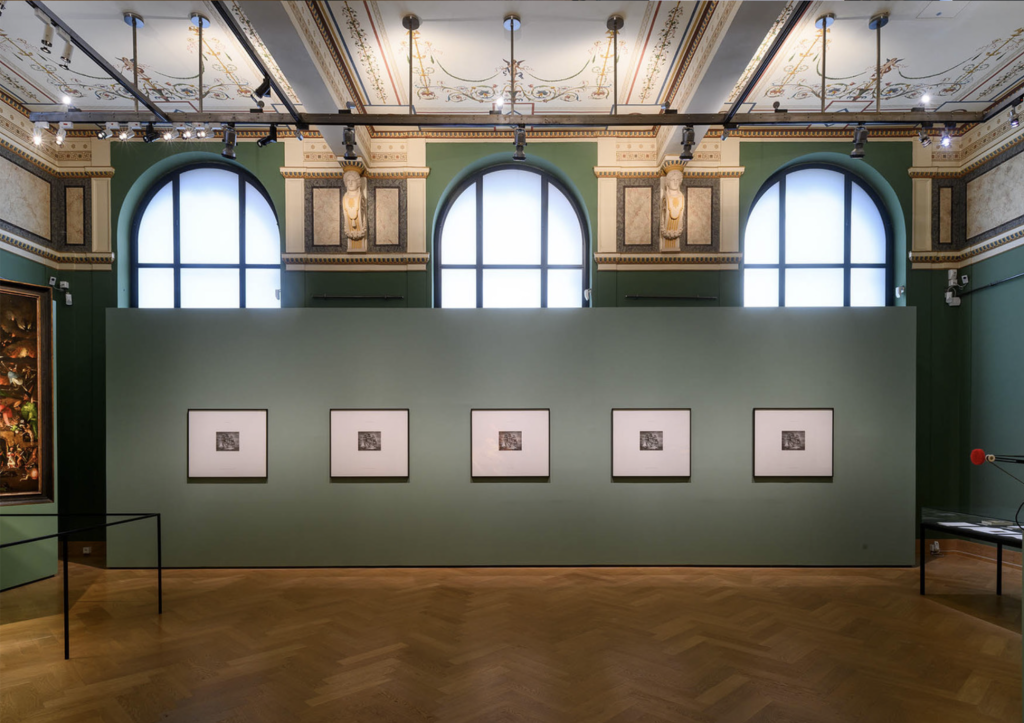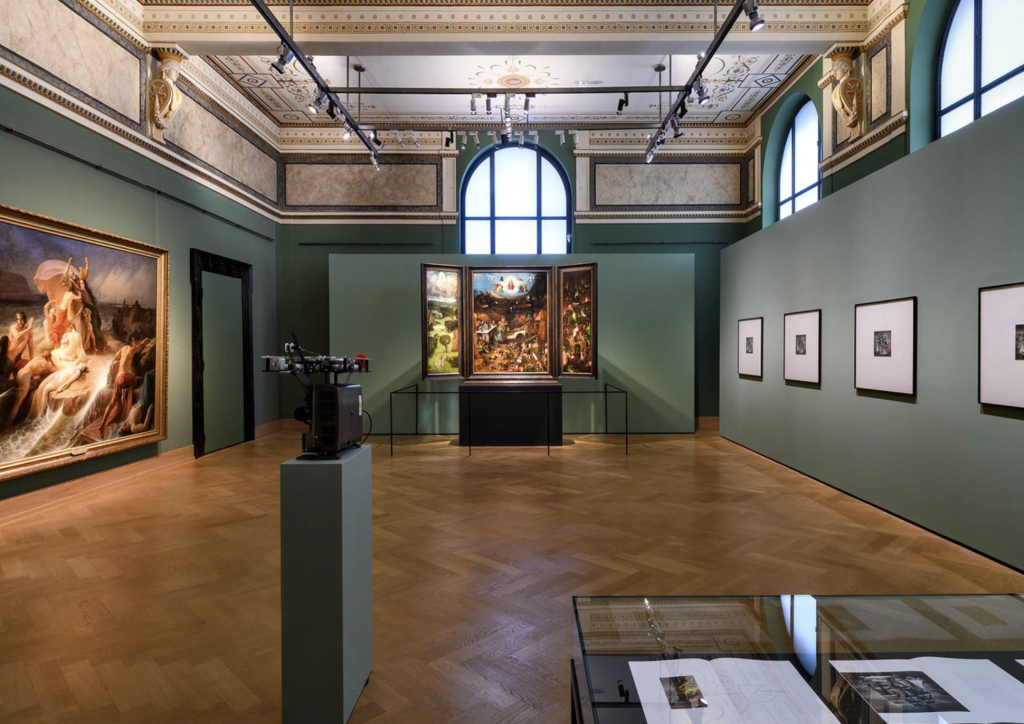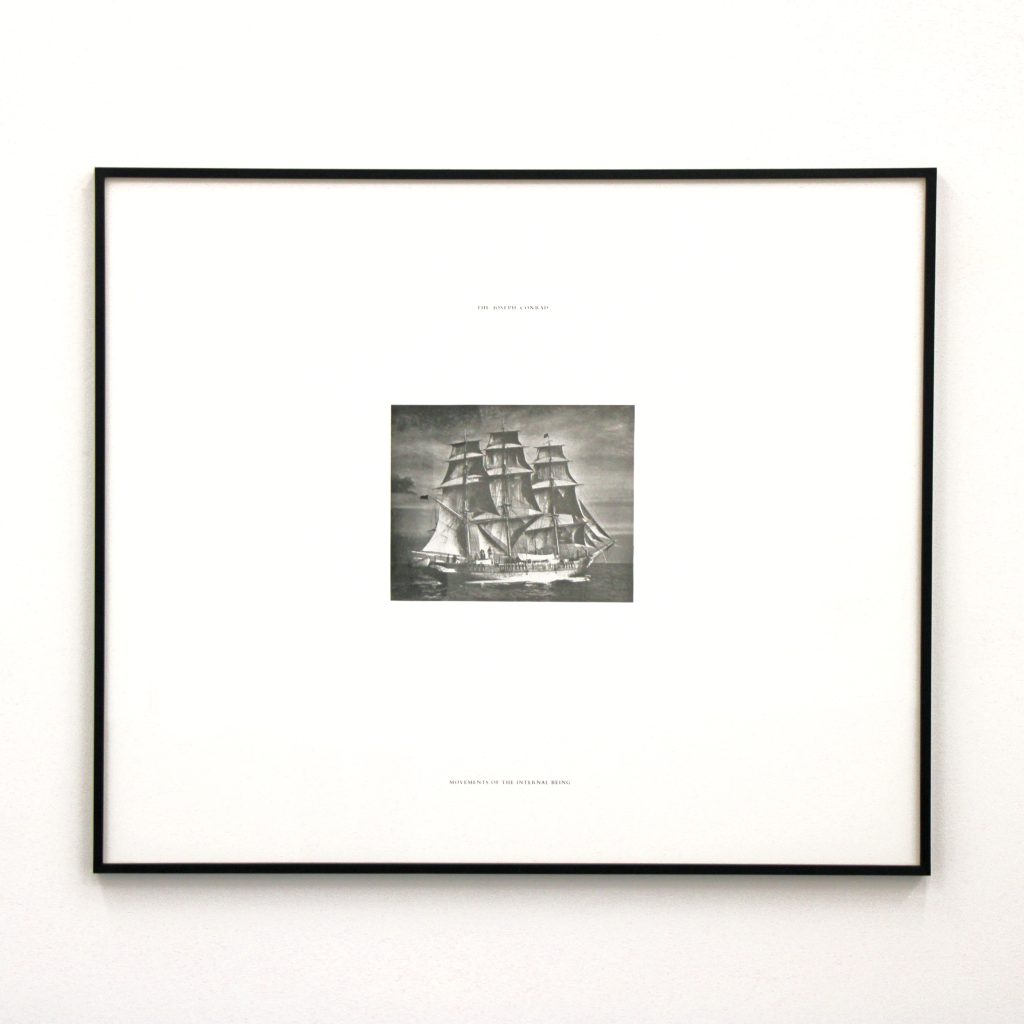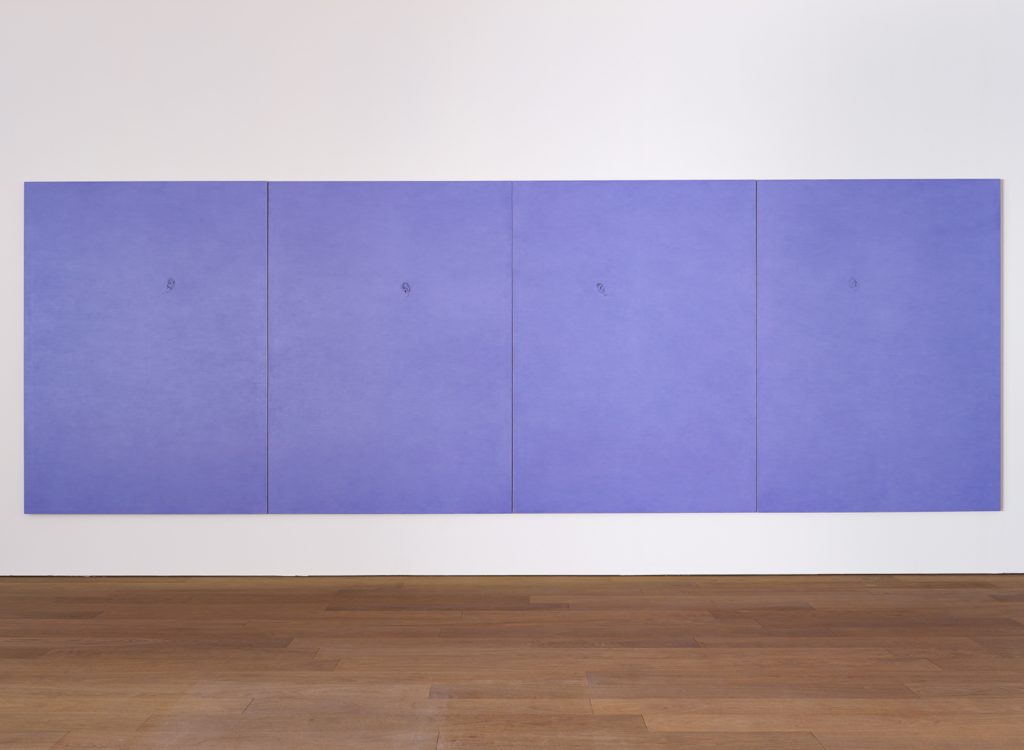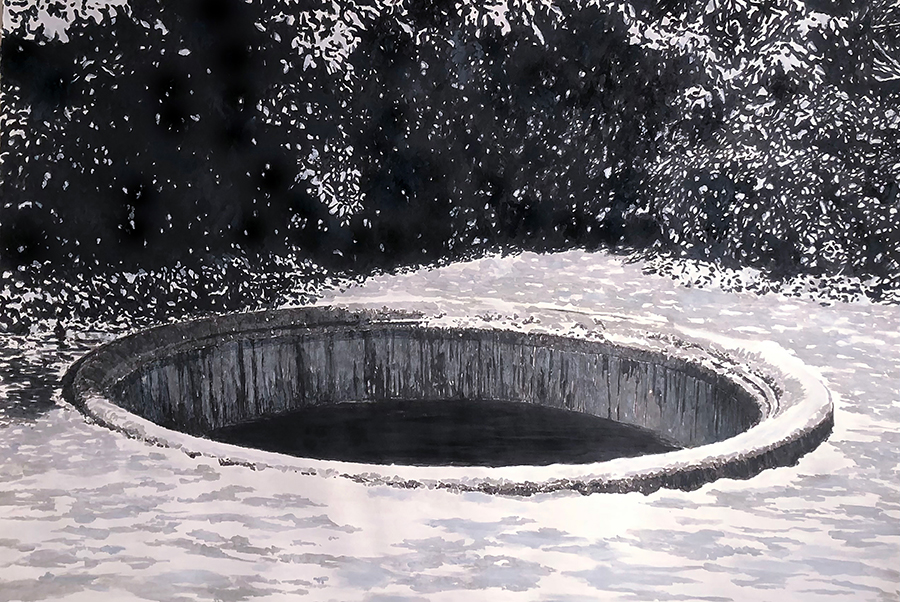
Le bassin des Beaux-Arts (I), 2024
Fusain et acrylique sur papier coréen, 150 x 210 cm
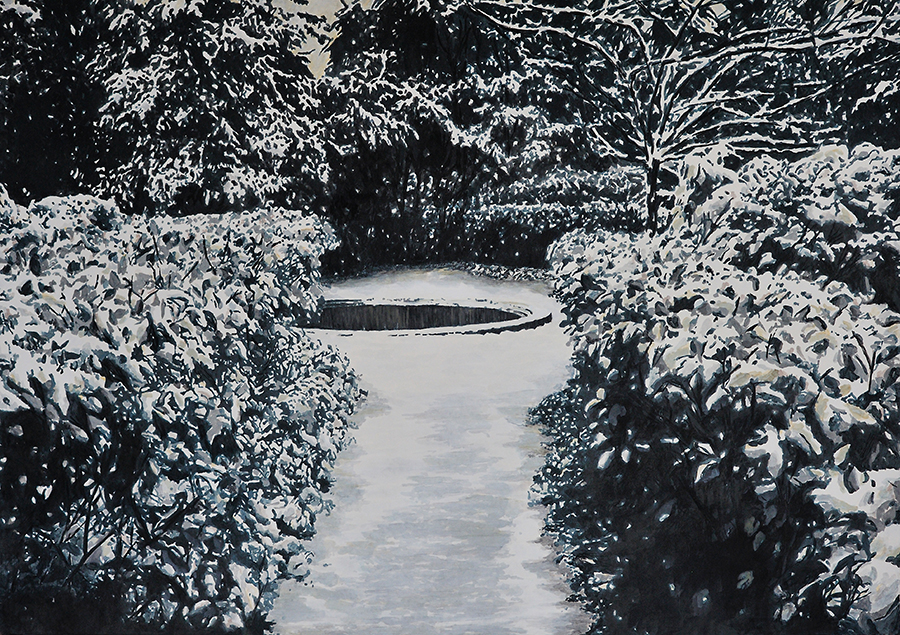
Le bassin des Beaux-Arts (II), 2024
Fusain et acrylique sur papier coréen, 150 x 210 cm
Jean Auguste Dominique Ingres, Jacques-Louis David, Charles Garnier, Géricault, Jean-Baptiste Carpeaux, André Dunoyer de Segonzac, Brancusi, César, Delacroix, Henri Matisse, André Masson, Gustave Moreau se sont certainement promené par ici. François Mansart, Charles Lebrun ou André Le Nôtre aussi. Tous trois ont participé à l’embellissement des lieux. Nous sommes dans le jardin de l’Hôtel de Chimay, propriété de l’École des Beaux-Arts de Paris, là même où Valérie Sonnier enseigne le dessin morphologique depuis 2003. Il était logique, voire attendu, qu’elle se mette un jour en quête de l’esprit des lieux.
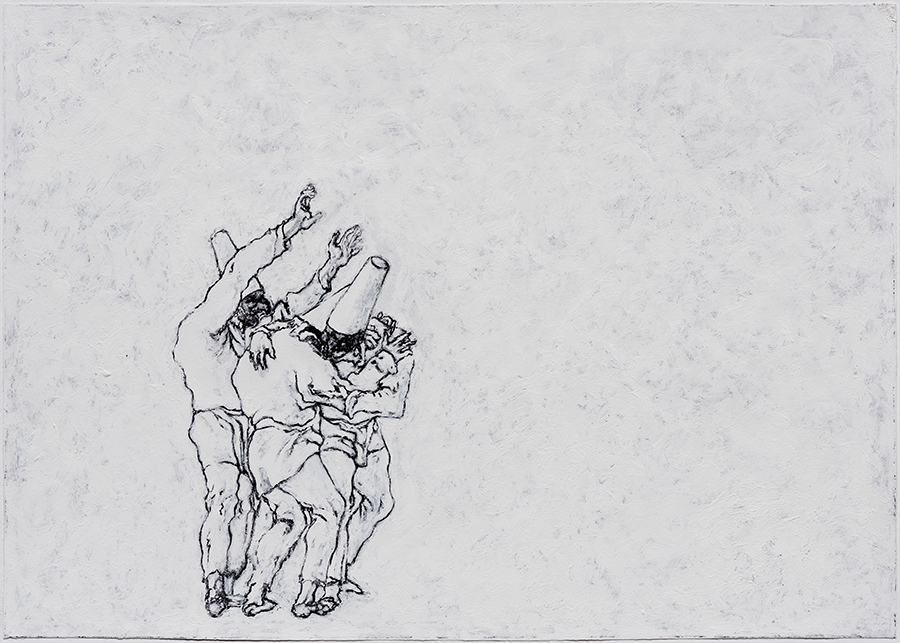
In their own dark, 2015
Photocopy, gouache, pen and ink on board, 46 x 54 cm
John Murphy s’est également intéressé aux dessins des Tiepolo et à la figure même de Pulcinello, cette collection de personnages, car Pulcinello est multiple et même nombreux, tout en étant, en quelque sorte, qu’une seule existence qui mange des gnocchis et fait des lazzis, toutes ces sortes de plaisanteries burlesques, grimaces et gestes grotesques. Déjà en 2006, alors qu’il fait sienne cette image extraite de La Grande Bouffe, la « grande abbuflata », de Marco Ferreri (1973), séminaire gastronomique et suicide collectif de quatre hommes fatigués de leurs vies ennuyeuses et de leurs désirs inassouvis et qui bouffent dès lors jusqu’à ce que mort s’ensuive, John Murphy rapproche ce plan où l’on voit Ugo Tognazi s’apprêtant à donner la pâtée à Michel Piccoli de quelques dessins des Tiepolo, père et fils, Giambattista et Giandomenico : des Pulchinello masqués, ventrus, pansus, bossus, constamment occupés à cuisiner des gnocchis, à les manger, à les digérer, à les déféquer. Plus récemment, John Murphy a sélectionné une série des dessins de la vie de Pulcinello, ce divertissement pour les jeunes gens. Tout l’art de Murphy consiste à rassembler une constellation de signes révélateurs d’une expérience poétique. Il dialogue sans cesse avec des œuvres existantes provenant pour la plupart d’un corpus littéraire, pictural, cinématographique. En ce cas, il a fait des copies de certains de ces dessins de Giandomenico Tiepolo et les a masqué, les recouvrant du sfumato d’une couche de gouache blanche. Ensuite, à la plume, il a retracé les motifs sous-jacents qui l’intéressent, comme s’il désirait nous révéler le secret de Polichinelle, sans aucun doute Pulchinello lui-même, affublé de son masque, doté de son gros nez crochu, portant sur la tête un étrange chapeau, sommet de sa difformité, revêtu de son costume blanc et spectral, confondu à la gouache, personnage grotesque, touchant et effrayant à la fois, sans cesse au bord de la chute entre une invivable tragédie de la destinée et le comique des situations, la comédie comme inéluctable répétition du caractère. A la fois, Murphy ravive le souvenir des dessins de Domenico Tiepolo, les révèle et s’en écarte, les efface, ne conservant que ce qu’il estime nécessaire à son propos. La compagnie des polichinelles s’affaire et s’agite, se montre du doigt. Rien pourtant n’empêchera la perte, la chute, la fin en soi. Le sublime et le grotesque se côtoient, l’un et l’autre évoquent la finitude de la condition humaine, ce dévalement de la vie qui se dissout dans la multiplicité et l’affairement.






